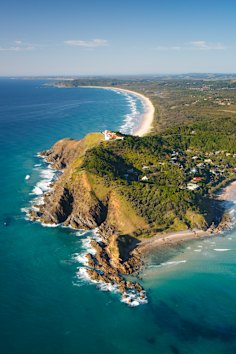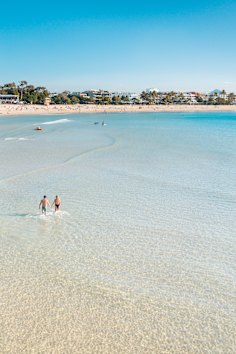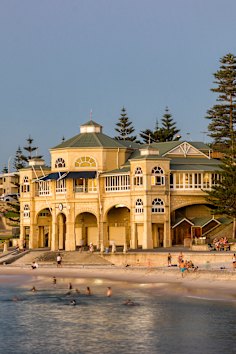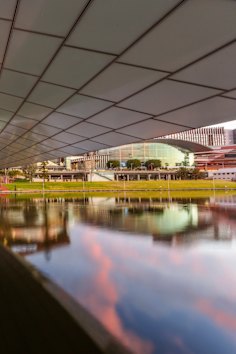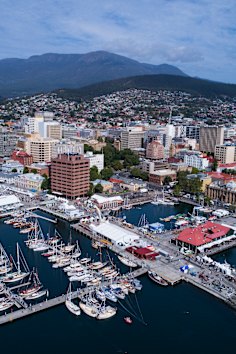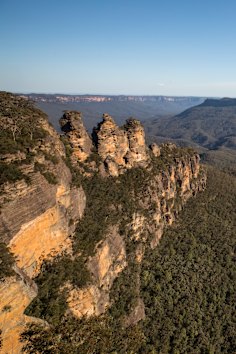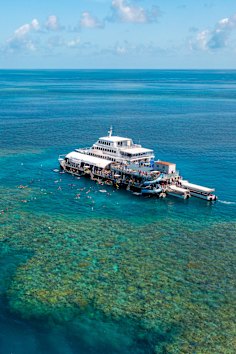This was published 15 years ago
Weird and wearable: festival wows Wellington
Helen Westerman discovers a whole new world in Wellington.
The air is alive with the sound of more than 3000 Kiwi accents. The sold-out arena in New Zealand's capital of Wellington is abuzz with excitement. Entertainers move through the crowd encouraging cheers or applause. At one stage there is even an attempt at a Mexican Wave.
But this is no rugby match. This is Wellington's World of Wearable Art (WOW) awards, a yearly event that claims to be a unique fusion of fashion, art and theatre in a riotous explosion of entertainment.
For 10 days in September, more than 35,000 New Zealanders and increasing numbers of international visitors flock to watch designs from around the world compete for more than NZ$100,000 worth of prize money - and be entertained in the process.
It is obvious locals enthusiastically embrace the event, and they dress for the occasion. Young fashionistas brave the cool evening in stilettos and strapless frocks, while the genteel opera crowd are outfitted in semi-formal wear and velvet wraps.
But this isn't really a fashion event either. A surprising number of young men accompany their girlfriends - seemingly without coercion - and grey haired men sit with their families.
There is almost a picnic atmosphere, with a generous number of bottles of New Zealand's ubiquitous sauvignon blanc carried in by the crowd. (The giant Montana wines is a long-time sponsor). It has the air of extreme theatre sports - but better dressed.
The show itself proves to be a spectacular two-hour theatrical flight of fancy. Once New Zealand comedy duo, The Topp Twins, finish their opening gags to pleased guffaws, the stage rapidly metamorphoses into a giant forest where gigantic grasshoppers, a ballet-dancing daisy chain and a dandelion prance around.
Within seconds, it has morphed again; in a nod to Maurice Sendak's Where the Wild Things Are, the bird's nest is fitted with a sail and a small boy wearing a metal colander as a hat is hoisted into the sky; then a disc jockey at his decks hovers from the ceiling while athletic young men below him give us their best break moves.
Tightly choreographed performers dip, fly and pirouette in a mix of kitsch (think high-kicking cowboys wearing silver lame hotpants) and high operatic farce, complete with a towering diva wearing a large illuminated moon that could pass for horns.
But it is the costumes which dominate: an entry calling itself Firebird flashes fabrics of wings of gorgeous colour; in another entry called Psychedelic Symphony, performers dressed in black disappear completely into the dark stage so that only the violent neon pink violins are visible under the fluorescent light: the instruments appear to be bobbing and wheeling around the stage by themselves.
All of this is not bad for a concept which began very humbly in 1987, when founder Suzie Moncrieff decided she wanted to "take the art down off the walls" of her gallery space in Nelson, on the South Island, and put it on the body instead.
Moncrieff, an elegant woman aged 60 with long grey hair, was then a single mother on income support (she jokes how the New Zealand government were WOW's unofficial 'sponsors') struggling to realise her dream of becoming a sculptor.
A musician with no formal theatrical or business training, Moncrieff went through the phone book looking for sponsors, literally knocking on the doors of "big business".
"I didn't even know you needed to make an appointment," she says. She was knocked back; back then, business was interested in sport, not arts. Finally she told a Nelson cafe owner, Eelco Boswijk, of her troubles. How much did she need? Boswick asked. A lot, Moncrieff told him - $1000.
"He came back with a cheque and handed it over," she says. "He is a great supporter and is now a patron."
WOW now operates with a multi-million dollar budget (organisers won't specify, saying the figure is commercial-in-confidence) and appears to have its pick of New Zealand corporate sponsors.
Even the global downturn and New Zealand's recession has not dented either its budget or ticket sales, with sales climbing 20 per cent above last year, leading organisers to add another show. All were sold out this year.
It generates an estimated $10 million for Wellington traders over its ten day run, says WOW's chief executive officer Gabrielle Hervey and uses hundreds of performers and backstage crew in a fine showcase for Wellington's cultural community, already swelled by the country's film-making boom. In the past, it has even featured members of the Royal New Zealand Ballet.
Four years ago WOW moved from Nelson to Wellington - a move which stirred considerable controversy, but was necessary, says WOW's brand manager Donna Ching, in order to ensure the event continued to grow. (The WOW museum opened in Nelson in 2001; many of the garments which appear in the shows find a home there.)
Moncrieff and her team are now concentrating on building the event's international presence. This received a significant boost this year when Alaskan David Walker won the event's supreme award - including $10,000 prize money - with his incredible Lady of the Wood 18th century ball-gown, made from planks of mahogany, lacewood, maple and cedar. It marked only the second time the event was won by someone other than a New Zealander.
International designs made up 55 of the 165 entries this year, and came from India, Hong Kong and United Arab Emirates, among other countries.
The number of Australian entrants has also steadily increased, attracting a quarter of the competition's entries this year.
Australian Felicity Hardy, a regular to the competition, based her entry, Nature's Fury, around Victoria's Black Saturday bush fires. Sadhana Peterson's Opera Diva was a version of the Sydney Opera House incorporating "Wagner, anti-war graffiti, and Bennelong Point", according to her notes.
In an effort to establish themselves on the world stage, WOW courts design schools and young students. Moncrieff's sister Heather Palmer, who is competition director, says she has even approached artists from Germany and the Netherlands after she saw their work in international art magazines.
It is obvious WOW has reached a critical point - already popular domestically, the show is clearly pondering its next move.
There are plans for a 'scoping exercise' into Australia, Moncrieff says, although this is early days. In 2001 a minishow was integrated into Dubai Fashion Week and this year it followed immediately on from New Zealand Fashion Week. But Moncrieff is adamant the event is not about fashion, instead comparing it to the wildly successful Cirque du Soleil. "This is a theatre show supporting design," she says.
Themes change year from year: this time there are seven sections - a competition for children, a south pacific section; an 'open' section where the designer is given complete artistic freedom; the eye-popping 'illumination illusion' where the costumes glow neon under fluorescent lights; a creative excellence section showcasing the sculptural premise of folded fabrics; the peculiarly named 'man unleashed', given over to male design; and the wildly extravagant avante garde.
Among the more high-profile names to enter are Academy Award-winning New Zealand film-maker Richard Taylor, best known for making costumes and weaponry for the Lord of the Rings films, as well as New Zealand fashion designer Annah Stretton (both are judges this year).
But Moncrieff is at pains to emphasise that the competition, judged blind, is not just for professional costume makers or artists.
Walker, while a sculptor, is also a carpenter, while another section winner, Mary Wing To, is a saddler from Enfield in the United Kingdom. A great many of the entries come from enthusiastic amateurs.
The more ornate costumes can involve a of huge amount of work and may (rarely) cost up to $4000, not including the cost of freight for more far-flung entrants.
Usually, though, the project is a labour of love. One Wellington entrant recycled hundreds of copper radiator parts, hand cleaning them using nail polish. Another collected 1400 plastic milk bottles for her creation.
New Zealanders Hayley May and Fiona Christie spent months planning their prize winning creation Second Skin, before either sewed a stitch on the 30 metres of fabrics that went into it.
They were clearly rapt to have won their section. But May says the reaction of family and friends to their design, a reptilian-like creation with the face completely enshrouded in a white shell-like structure was initially muted. Then it came, says May: "Wow!"
Photos: One weird and wearable festival
Helen Westerman attended the World of Wearable Art awards in Wellington as a guest of Tourism New Zealand and Positively Welling-ton Tourism.
Sign up for the Traveller Deals newsletter
Get exclusive travel deals delivered straight to your inbox. Sign up now.































